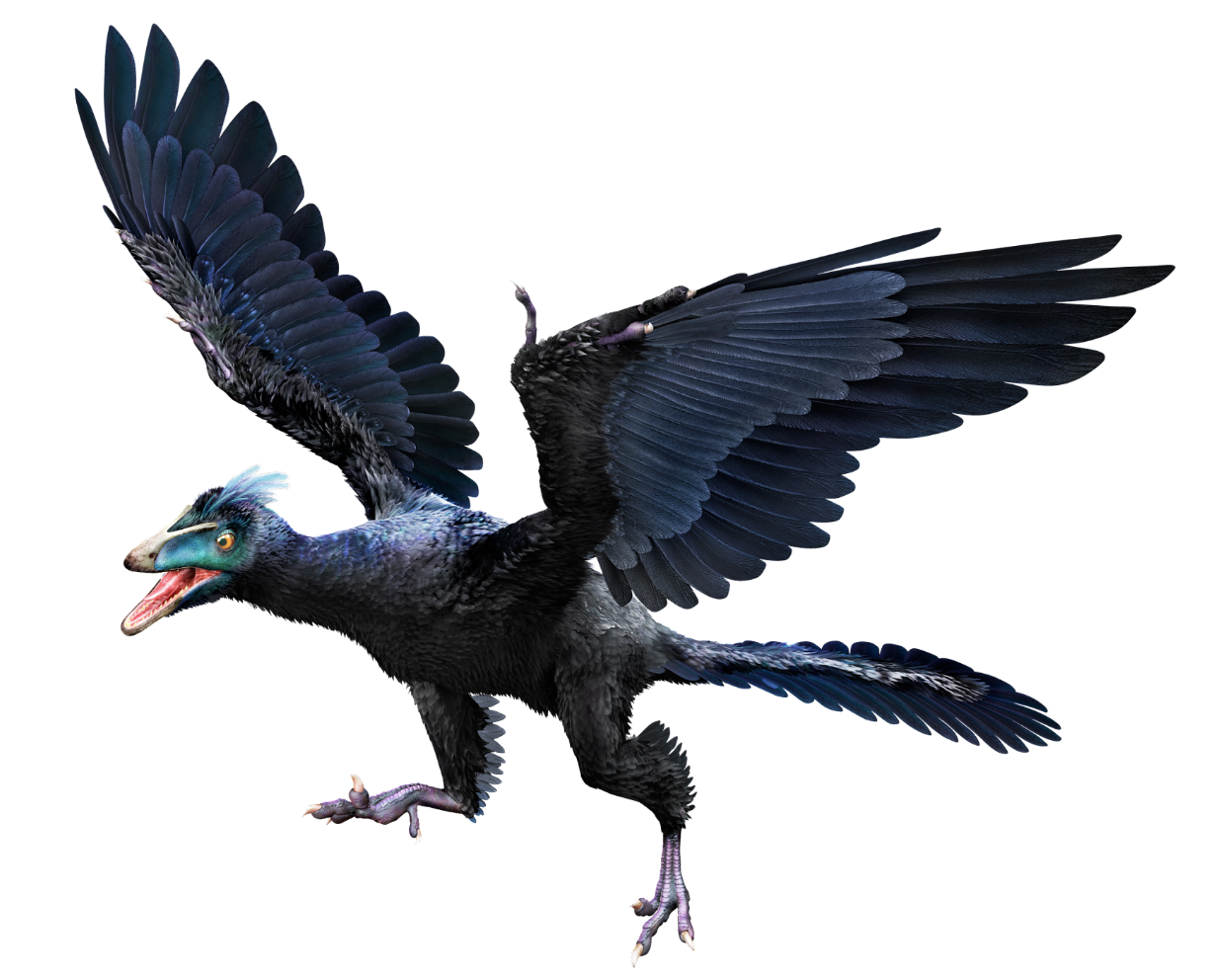Archaeopteryx: The Transitioner's Swan Song
Courtesy of Dorling Kindersley Limited
by JUNHYEOK JANG ‘25
Introduction
They say that dinosaurs are extinct. They say that the constitution of some of the most prominent animals to ever walk the Earth has become nothing but fossilized bones. They say that the legacy enshrined by some of the greatest names in history — Brachiosaurus, Spinosaurus, Tyrannosaurus, and many more — met its tragic end 66 million years ago when a massive asteroid happened to fall into what is now the Yucatán Peninsula, obliterating 75% of life from the surface of the Earth, including big names of the era such as Triceratops and Mosasaurus.
In reality, I am confident that everyone reading this article has witnessed a live dinosaur at some point. I, myself, along with broccoli and pasta, eat the breasts of a dinosaur we named Chicken for lunch and dinner. Dinosaurs exist around us with much biodiversity, as members of a class of animals we call birds.
This connection appears rather bizarre at first — neither Stegosaurus nor Giganotosaurus resembles anything remotely similar to a pigeon or a canary. Most dinosaurs had indeed been non-avian, and most flying reptiles, such as Pteranodon, were not dinosaurs. Yet approximately 150 million years ago, a few dinosaurs acquired the skill of flight and formed a secret society known as the avian dinosaurs, with its descendants developing into the birds we see today after years of tumultuous evolution and diversification. A central figure in this revolution was Archaeopteryx.
Biography
Archaeopteryx was a genus of early small avian dinosaurs alive during the Late Jurassic (150.8 - 145.8 million years ago, Tithonian age). Archaeopteryx was first discovered in the Solnhofen limestone quarries in Bavaria, Germany, in 1861, where more fossils have been yielded since then. Its name is derived from the Greek words ἀρχαῖος and πτέρυξ, respectively meaning “ancient” and “feather”; its name translates to “Ancient Feather.” Archaeopteryx is regarded as a transitional species between non-avian dinosaurs and modern birds; although Archaeopteryx possessed numerous avian structures, such as feathers, a wishbone, and a keeled sternum. Although not a direct ancestor of modern birds, Archaeopteryx has undeniably contributed to the branching of a lineage of avian dinosaurs that would evolve into modern-day birds.
The First Dinosaurs in the Sky
The Late Jurassic was an era when evolution had reached its peak. The arms race between prey and predatory species culminated with a dramatic increase in the fauna’s biomass. Titanic sauropods such as Brachiosaurus and Apatosaurus flourished in this period, while dominant theropods including Allosaurus also emerged.
Yet the most pivotal evolution of all, surpassing the significance of the others by far, was exhibited by a small group of theropods that would evolve to be the earliest avian dinosaurs. In addition to their reptilian features, these dinosaurs grew to develop numerous aerodynamic anatomical structures. One of the most important of such was the emergence of feathers, providing aerial thrust and coordination in flight. Another significant adaptation was the development of flight-specialized respiratory systems and skeletal systems, respectively enabling more efficient air exchange and the anchorage of muscles for flight.
The exact process by which transitional avian dinosaurs acquired flight is still debated among scientists. Nonetheless, several popular theories attempt to explain this phenomenon. The first is the arboreal theory, asserting that the early avian dinosaurs glided from tree to tree and that their feathered wings were instrumental in steering their flight, resulting in natural selection favoring longer and more aerodynamic feathers. Another is the cursorial theory, projecting that avian dinosaurs evolved from bipedal terrestrial theropods that flapped their limbs for acceleration, which would eventually become powered flight. A third theory, known as the wing-assisted incline running (WAIR) theory, hypothesizes that avian dinosaurs, just as modern birds do, flapped their wings to assist in running up inclined surfaces, which later developed into powered flight.
Although Archaeopteryx was one of the earliest and most prominent avian dinosaurs of all time, it was not the only transitional species that emerged in this era; some of its notable colleagues include Jeholornis, Anchiornis, and Xiaotingia.
The Savior of a Lineage
Sadly, Archaeopteryx never made it to the Cretaceous period, where birds began to significantly diversify. Being a transitional species, although a close relative of birds that flourish in the modern world, none of its direct descendants remain. Like any other organism, Archaeopteryx was not immune to a changing environment and interspecies competition, and, as in the case of species with specialized niches and living conditions, Archaeopteryx had been especially vulnerable.
Yet the avian lineage that Archaeopteryx had founded with other primordial avian dinosaurs lives on to this date. 66 million years ago, when the asteroid crashed into the Yucatán peninsula and formed what is now the Chicxulub Crater, all non-avian dinosaurs perished. Although there are diverse opinions regarding the factors that enabled avian dinosaurs to persist, most scientists agree that the effective metabolism and air exchange were immensely beneficial for their sustenance amidst hostile conditions. Their small size and capability for flight also proved instrumental, respectively allowing them to consume energy efficiently and disperse across the world.
While it is true that birds had already evolved at standards far more complex than that of Archaeopteryx, had it not sung its swan song 150 million years ago, it is possible that the fate of the birds would have been in jeopardy as well. Had not avian species had the ample time of around 84 million years to diversify and disperse across the planet, their safety, too, would not have been guaranteed.
The Golden Age of the dinosaurs ended with the Chicxulub asteroid 66 years ago. Yet its swan song continues to echo as birds. And that song was first sung by Archaeopteryx and its primordial avian colleagues.

